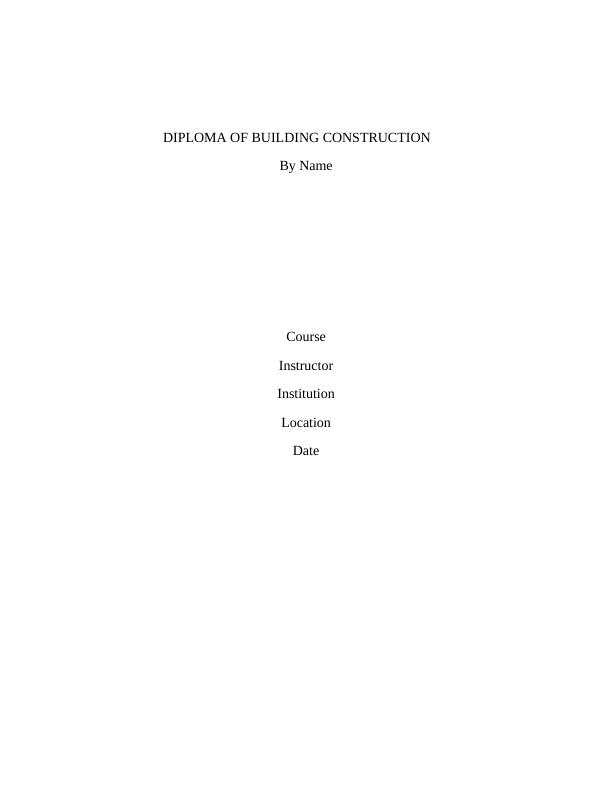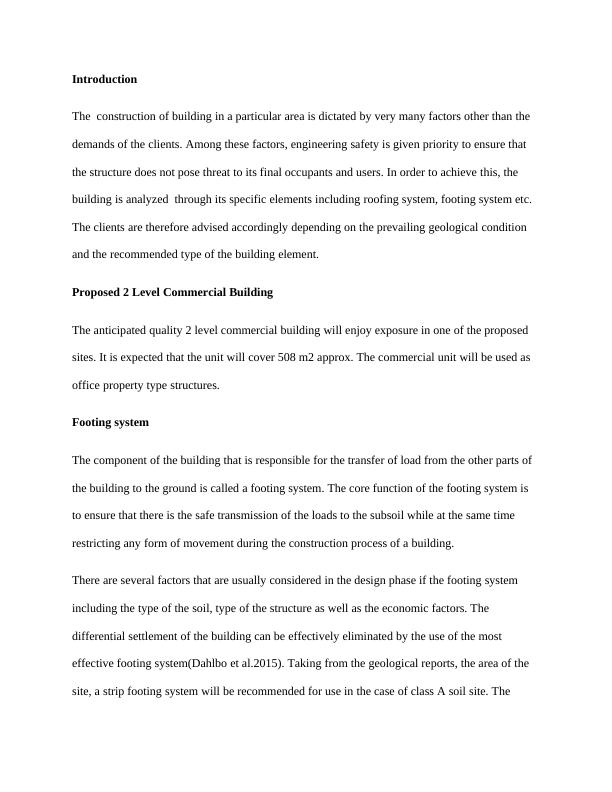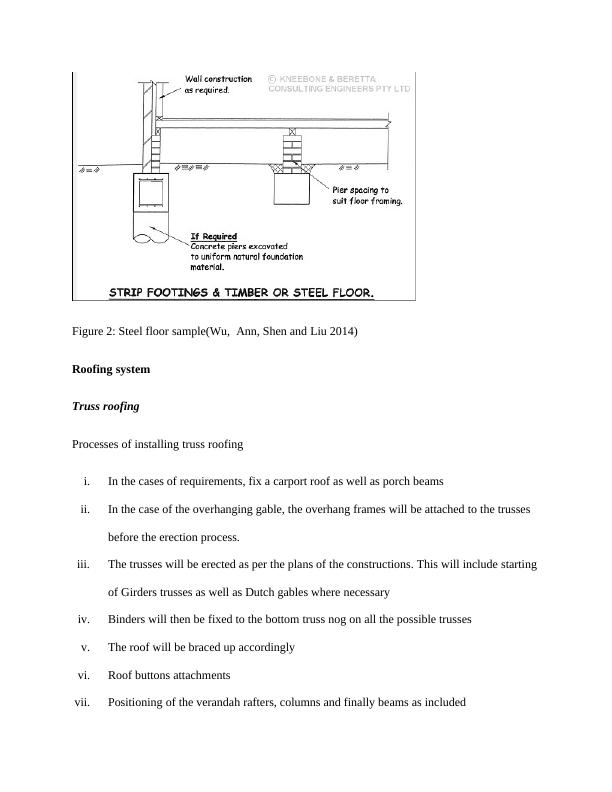Building Construction: Footing, Roofing, Flooring, Cladding, Walling, Demolition
14 Pages2666 Words1 Views
Added on 2023-01-13
About This Document
This document provides an overview of various aspects of building construction, including footing systems, roofing systems, flooring systems, cladding systems, walling systems, and demolition processes. It discusses the importance of engineering safety in building construction and provides recommendations for different types of building elements. The document also includes information on the materials and techniques used in each aspect of construction. The content is relevant for students studying building construction or anyone interested in learning about the different components of a building.
Building Construction: Footing, Roofing, Flooring, Cladding, Walling, Demolition
Added on 2023-01-13
ShareRelated Documents
End of preview
Want to access all the pages? Upload your documents or become a member.
Applying Structural Principles to Construct Medium Size Building
|13
|3394
|243
Construction Management
|11
|1575
|71
Sittingbourne Footing System Assignment
|27
|1880
|48
CPCCBC4010B Apply Structural Principles to Residential Low
|3
|653
|145
Structural Principles for Commercial Low Rise Construction
|10
|1295
|112
Floor Framing Assessment using AS1684
|12
|2705
|385




